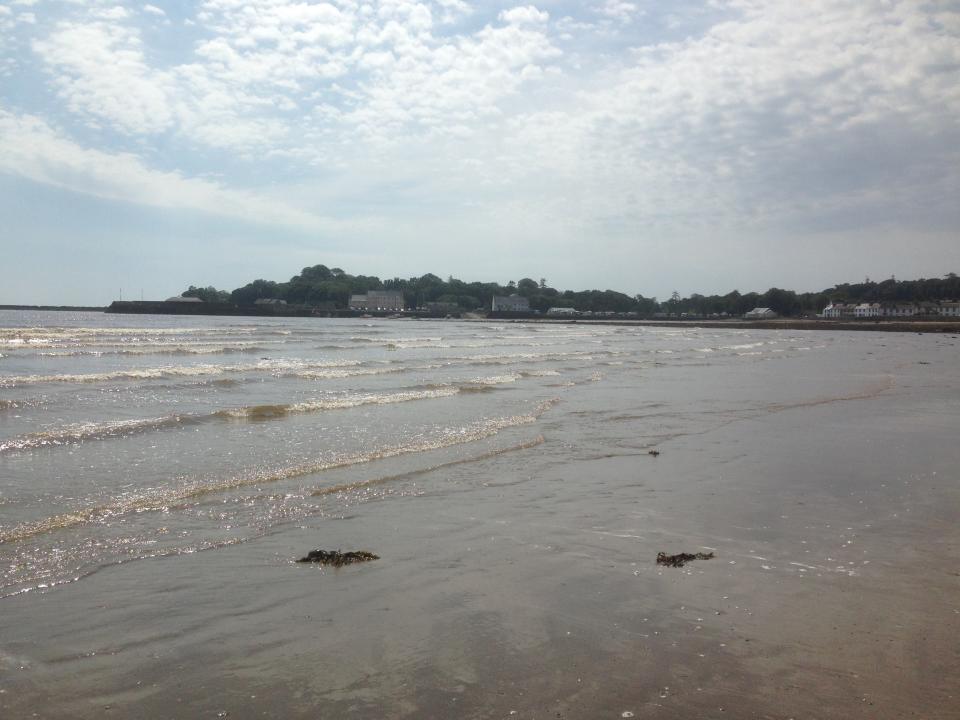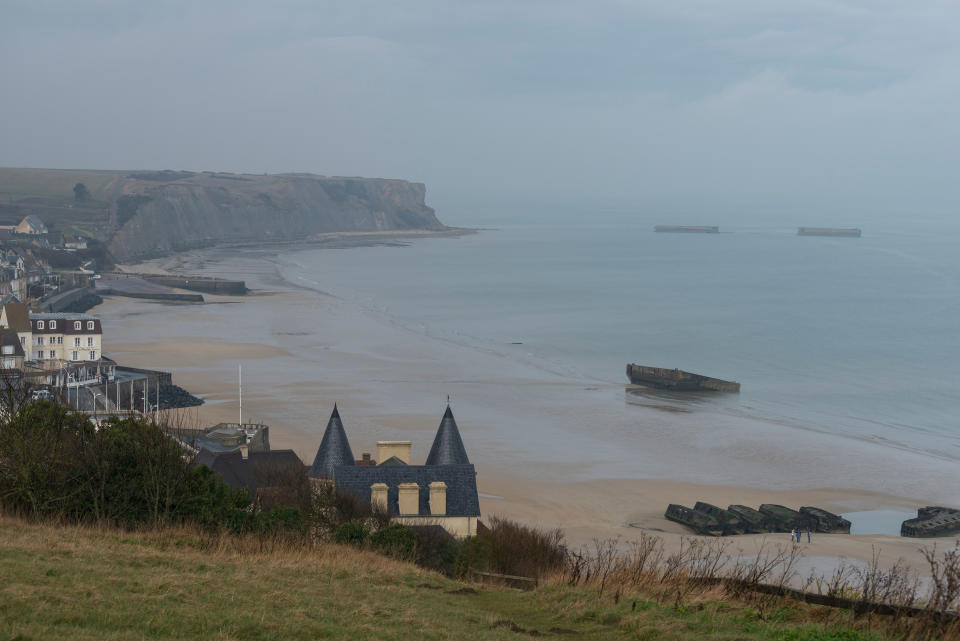Scottish village’s ‘pivotal’ role in secret preparations for D-Day landings
Situated on a quiet stretch of coastline in Dumfries and Galloway, the peaceful village of Garlieston does not look like a place that played a crucial role in the Second World War.
But for anyone arriving in the village, the road sign proclaiming Garlieston the “birthplace of the Mulberry Harbour 1943” gives a hint of the important part it played in the Normandy landings.
For it was here that the pier head and floating roadways used to unload troops, vehicles and stores were developed in the year leading up to D-Day on June 6 1944.
The idea for the Mulberry Harbours came after the disastrous allied raid on the German-occupied French port of Dieppe in 1942 during which more than 3,500 of those who landed were killed, wounded or captured.

The allies realised that if they could not capture a French port they would have to build their own and the idea of the portable Mulberry Harbours was born.
As plans for D-Day progressed, parts of Garlieston Harbour and nearby Rigg Bay and Cairn Head in Dumfries and Galloway were used to test prototype roadways, with the military arriving to requisition areas in May 1943.
Garlieston resident Roy Walter, who was involved in publishing the book A Harbour Goes To War, believes the area was chosen because it was “off the radar” and conditions were similar to the French coast.
He said: “It was a long way from anywhere and also because the tidal range was very similar and the beach conditions were very similar to those in Normandy, the tidal range is about 24ft here so that was a good analogue for what was going to be encountered over in Normandy.
“I think there was surprise among local people but acceptance because people understood that it was part of the war effort and clearly if they had chosen Garlieston as the location then there must have been an element of secrecy required.
“Most German reconnaissance flights would be into the south of England, maybe up as far as Birmingham, maybe even Manchester but I don’t think they ran much in the way of reconnaissance over Scotland, though Glasgow docks were bombed and Northern Ireland as well.
“I just think it was off the radar.”
Three prototypes known as Hippo, Swiss Roll and the Spud pier combined with a floating “Whale” roadway were tested, with the latter chosen as the one used for the Normandy landings.
The pier could be jacked up or down to ensure the berthing platform was stable and the roadways, which rested on floating pontoons codenamed “beetles”, connected the pier to the shore.
To shelter the ships and roadways, huge breakwaters were constructed to form harbours off the French coast, with one known as Mulberry A for the Americans established at Omaha beach and Mulberry B built at Sword beach near Arromanches for the British and Canadians.
The different sections of the harbours were taken across the English Channel and assembled in the days following D-Day.
Mr Walter said the harbours played a “pivotal” role in the Normandy landings as they helped maintain supply lines.
He said: “We could have landed troops and tanks but, as people learn repeatedly through history, your army is only as good as the supply lines behind it and that was really what Mulberry delivered, it was a conveyor belt of ships just coming along and disgorging stores and tanks and troops.
“I think they were pivotal to keeping supply lines going after the D-Day invasion and also for evacuating the wounded as well.”

While Mulberry A was destroyed in a severe storm that began on June 19 1944, Mulberry B survived and over the course of 10 months more than two million men, half a million vehicles, and four million tons of supplies were landed.
Mr Walter said the part Garlieston played in the construction of the Mulberry Harbours “has a legacy” in the village, where people are proud of the role it played in history.
An exhibition open from Friday to Sunday in the village hall tells the story of the Mulberry Harbours, and a parade is due to take place in Garlieston on June 6 to mark the 80th anniversary of D-Day.

 Yahoo News
Yahoo News 
